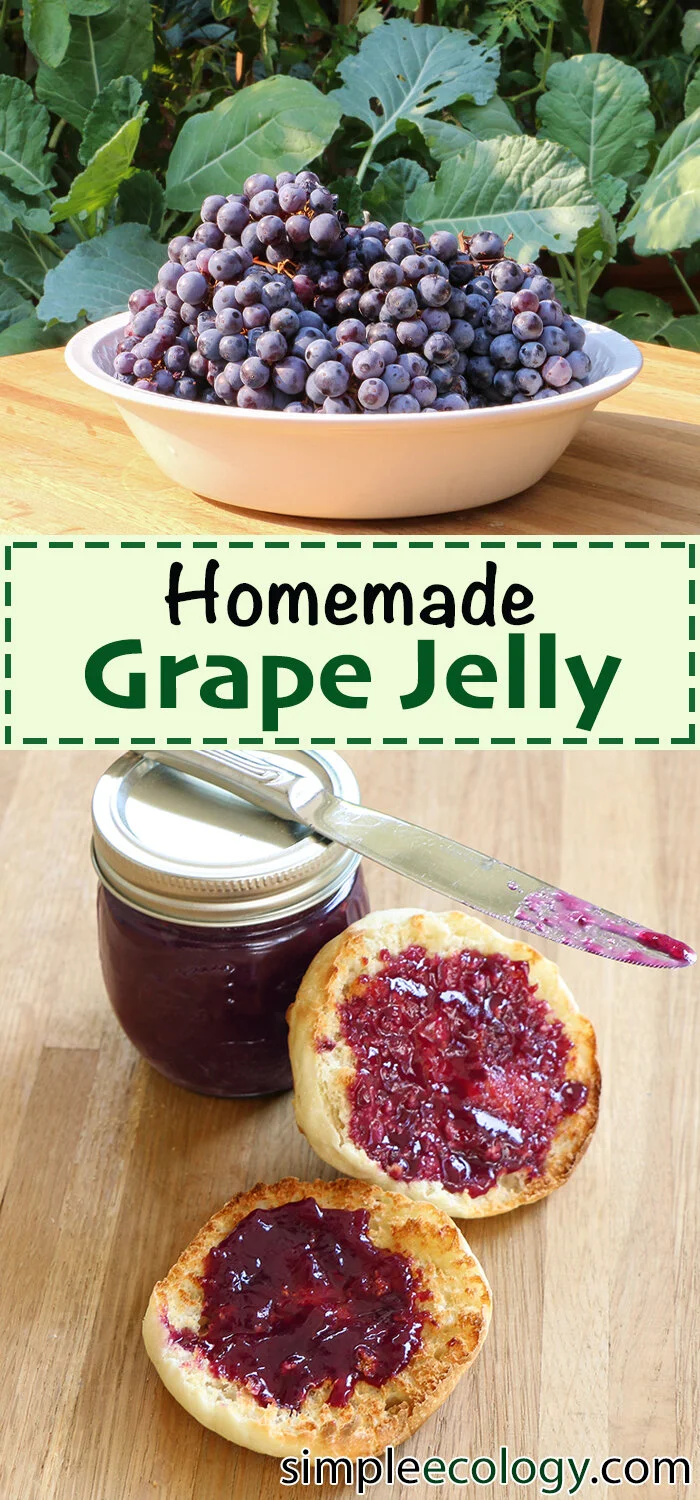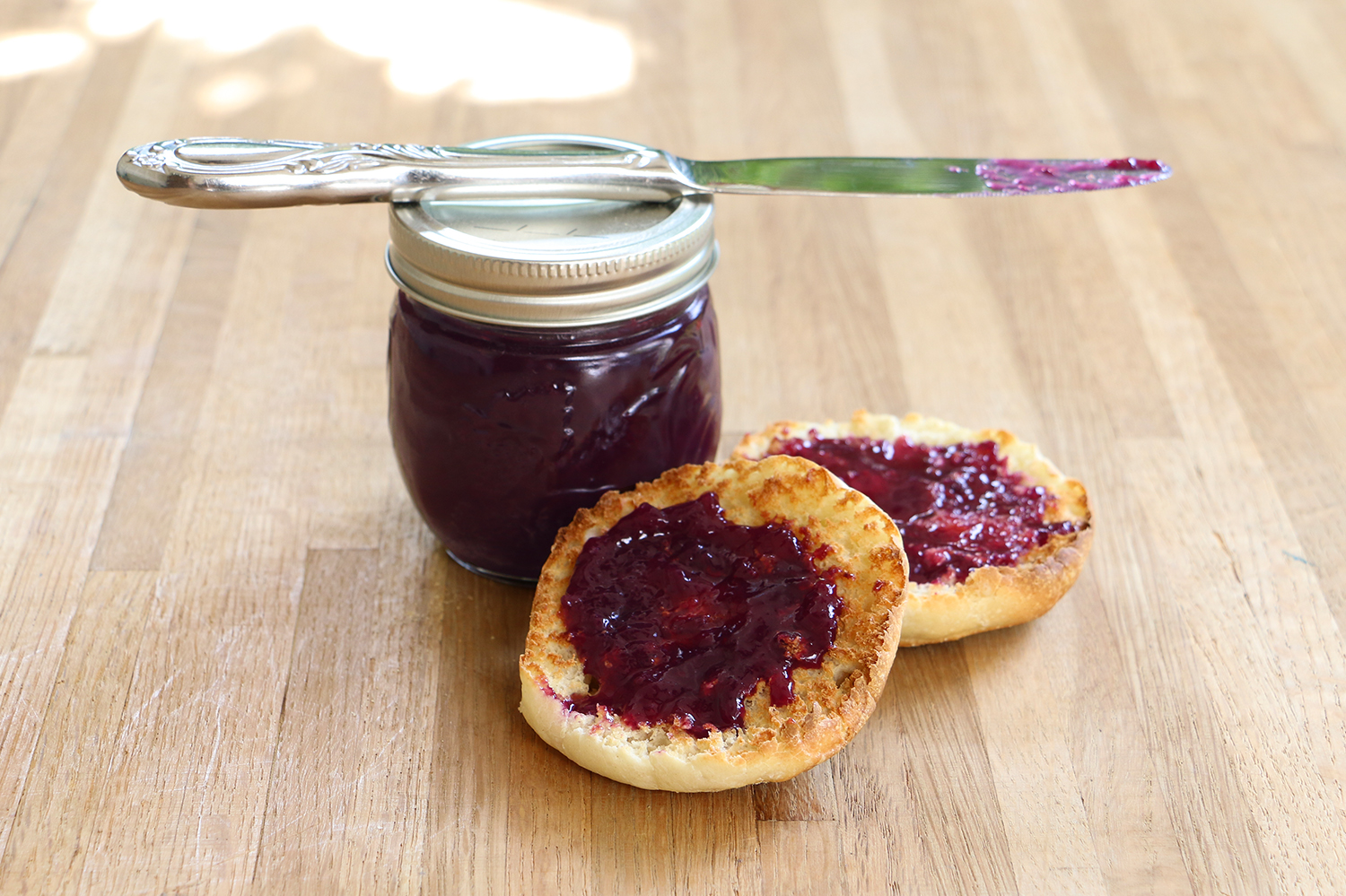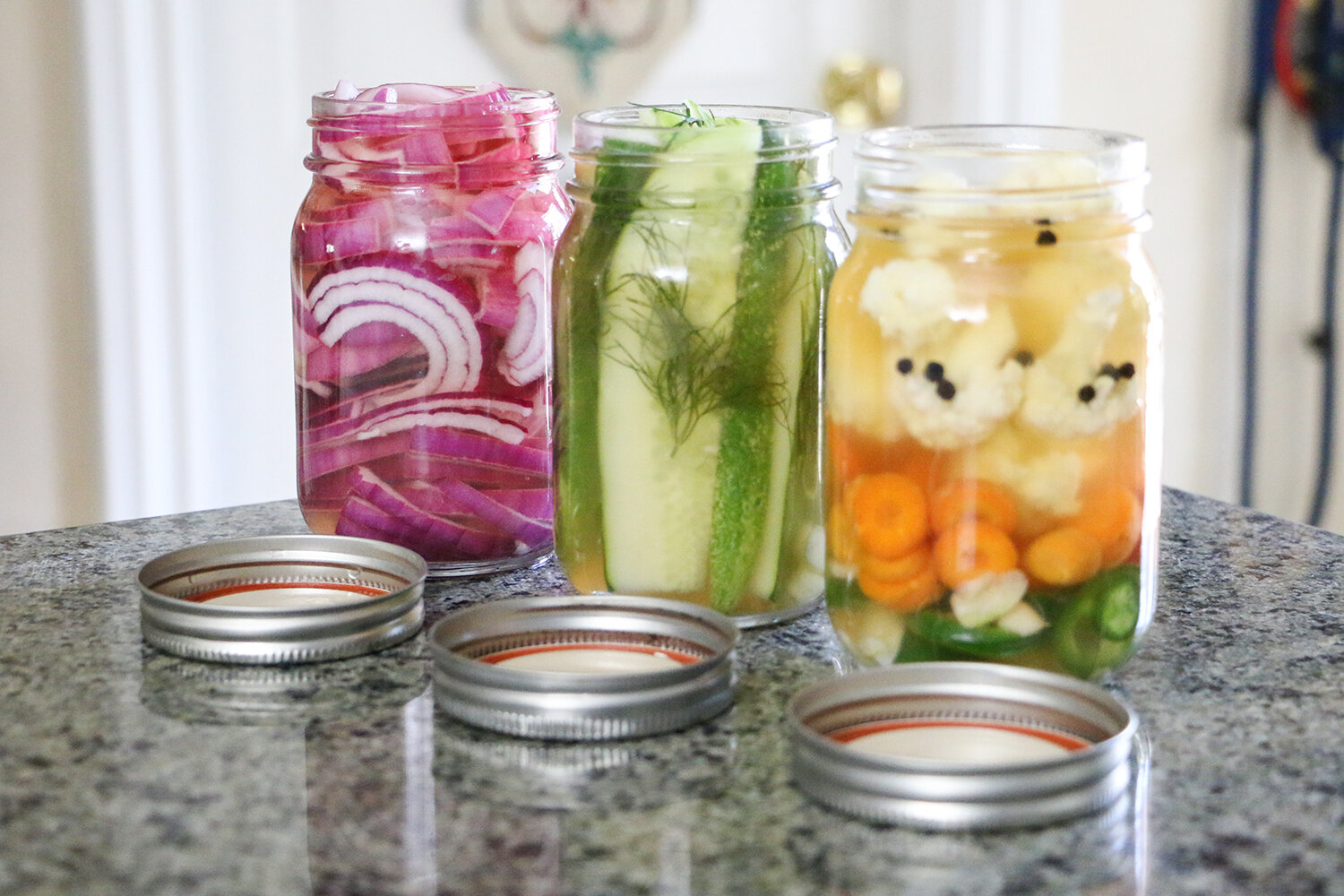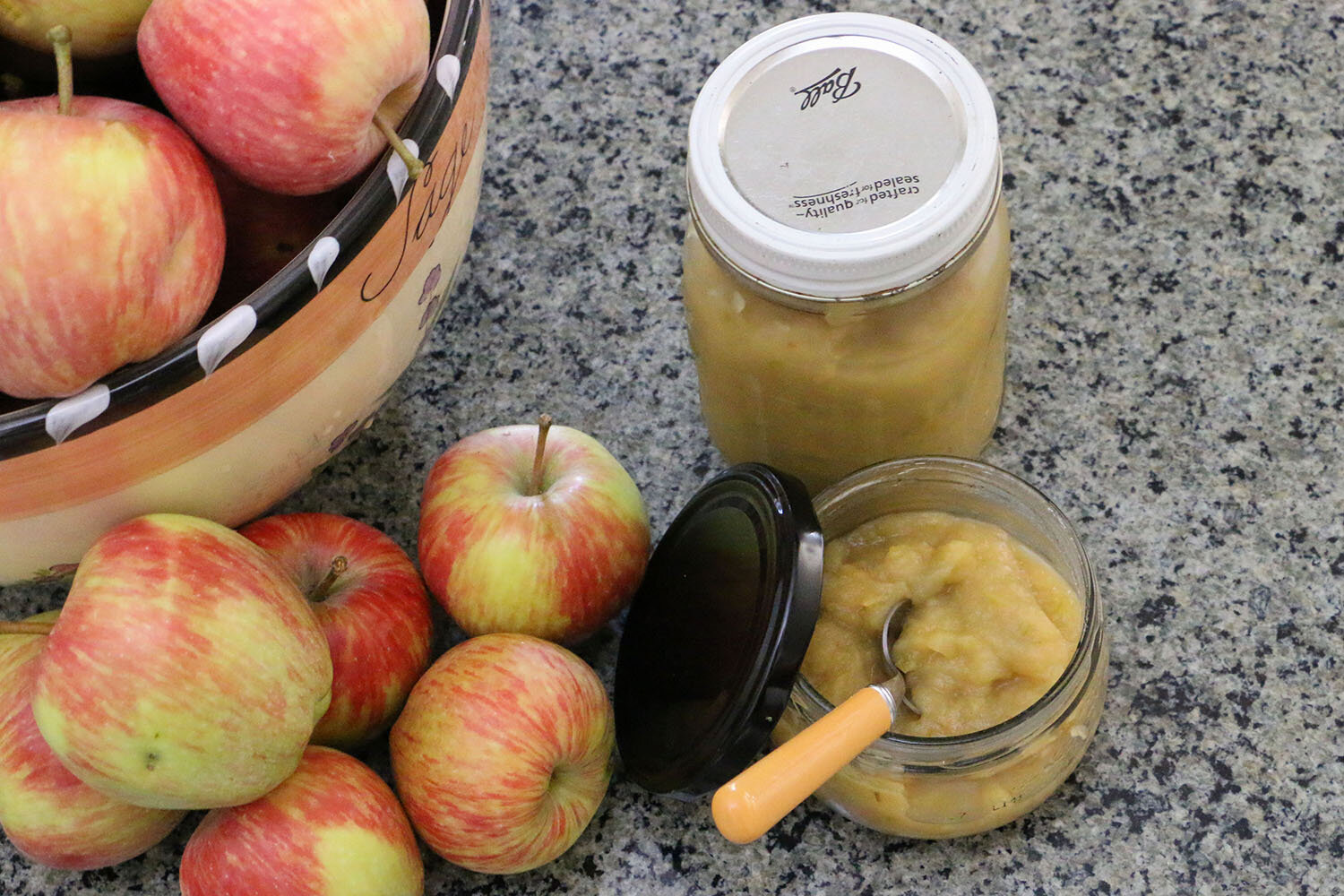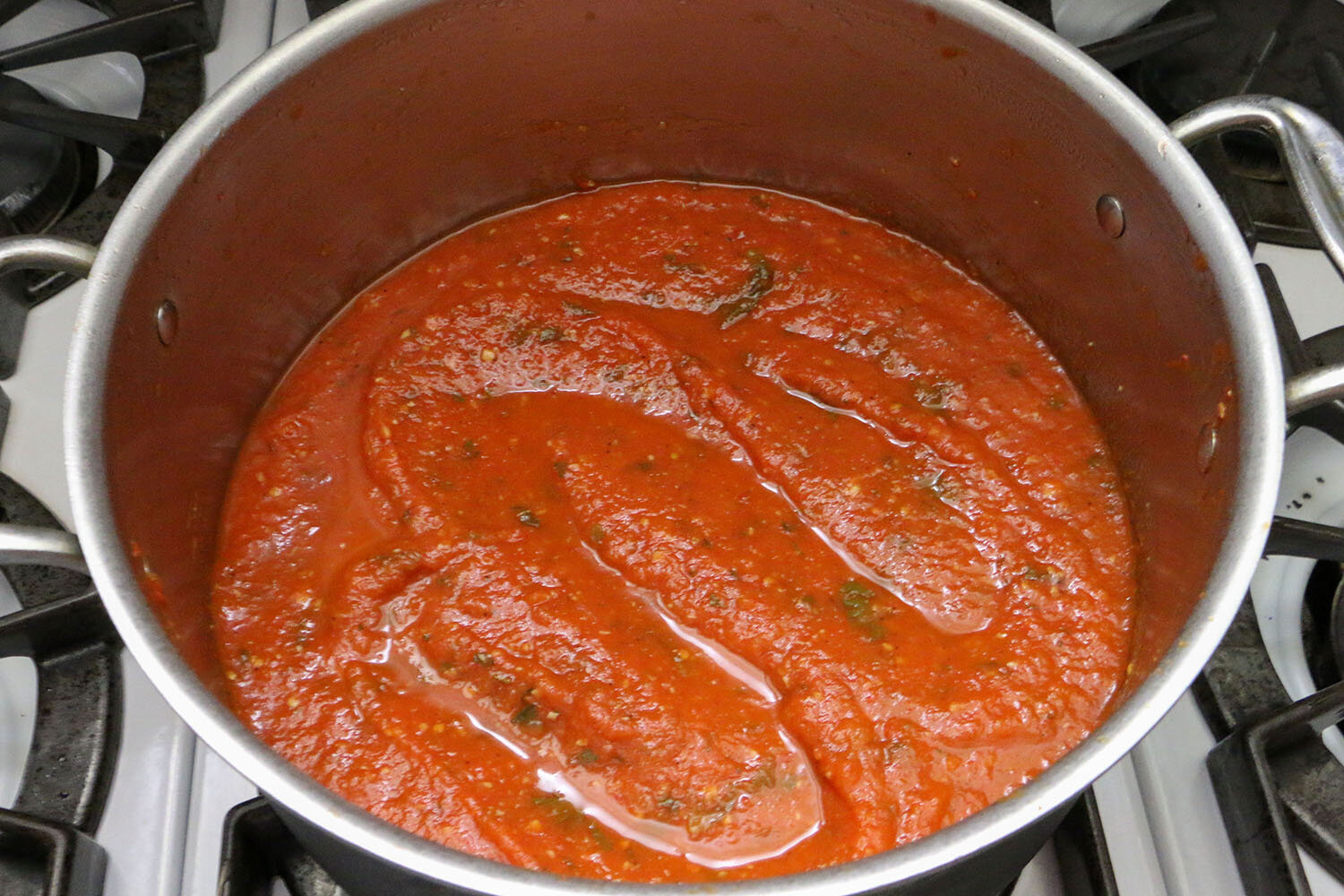Homemade Grape Jelly
Grape Jelly is a staple in almost every household, perfect for Peanut Butter & Jelly Sandwiches, morning toast or pancakes, or even dolloped onto some vanilla ice cream. This version is so easy to make yourself at home, and is a great way to get into home cooking and canning, especially if you have little kids that can help out. Try it out with our Homemade Almond Walnut Butter for a jazzed up version of a PB&J, or even just a spoonful straight out of the jar – it’s that good!
Homemade Grape Jelly’s Environmental Benefits
Buying in season, local produce and canning yourself can significantly cut down on the carbon emissions caused by food transportation of jarred and canned goods
Homemade canned goods are wonderful (and delicious) low-waste gift to give to family & friends, to keep for emergency food supplies, or to make cooking a weekday meal quick & easy
Buying pre-packaged and convenience food from fast food chains or grocery stores promotes the use of single use containers, utensils, napkins, and more that’ll end up in landfills and oceans, whereas making the same meal at home makes single use items obsolete
Homemade Grape Jelly
Prep time: 10 Minutes
Cook time: 20 Minutes
Cool time: 2 - 3 Hours
Total time: 3 Hours 30 MinutesMakes 5 Half-Pints
Ingredients:
- 7 cups / ~2.5 lbs Whole Grapes (for 3½ cups Juice)
- 1¾ cups Sugar
- 2½ Tbsp Less or No Sugar Fruit Pectin (see notes)
- 2 Tbsp Lemon or Lime Juice
Instructions:
1. MASH: Thoroughly rinse off the grapes, remove any stems that are still attached, and place the grapes into a large pot. With a potato masher, crush them so that little to no whole grapes are left intact, and place them on the stove on medium-high heat until they are at a boil. Once boiling, lower the heat to medium-low, and allow them to simmer uncovered for 10 minutes. Gently skim off any foam or bubbles that form while simmering. After 10 minutes, turn off the heat and remove the pot from the stove, and allow the mixture to cool down to room temperature entirely.
2. STRAIN: Once cooled completely, with a large bowl underneath, carefully scoop the grapes and juice into a Reusable Fine Mesh Straining Bag or into a food mill to remove any pulp and seeds. Be sure to squeeze the Straining Bag to get all of the liquid out, and measure out 3½ cups of juice. Rinse out the pot so that all pulp and seeds are removed, and transfer the juice back into the pot. Any strained pulp can be put into compost or discarded.
3. PECTIN: Mix ¼ cup of sugar with the pectin and set aside for later. Place the grape juice back onto the stove on a medium-high heat, bring it to a rapid boil. Add in the sugar & pectin mixture, stirring constantly until fully incorporated, then add in the remaining sugar and lemon or lime juice. Continue to boil the mixture for 2 minutes, stirring occasionally to prevent burning. After 2 minutes, turn off the heat and begin transferring to jars.
4. STORE: Using a wide mouth canning funnel and either a large scoop or ladle, spoon the jelly into half-pint jars for storage, leaving about ½ inch at the top of the jar empty. Put on a lid and place the jars into the fridge, and they will keep for up to 3-4 weeks.
Optional:
6. CANNING: This jelly can be preserved for much longer by properly canning it.
Notes:
Less or No Sugar Pectin – Be sure that you are using "LESS OR NO SUGAR FRUIT PECTIN" when making this recipe. The type of fruit juice and amounts of sugar, acid, and pectin all have a vital impact on the jelly. We would not recommend changing the amount of any of these ingredients or using standard Fruit Pectin for this recipe, as it will not set properly. Cooking Pectin – Using fruit pectin can be a little bit tricky, especially if you are not used to working with it. Heating the pectin activates it and thickens the mixture, but overcooking it will make the marmalade rock hard once in the fridge. Ere on the side of caution when using, as it’s better to undercook the pectin than overcook it! Can It For Later – This marmalade will last much longer if properly canned, after which it can be stored in a cupboard or pantry for months before being opened. These make great gifts for friends and family, just be sure to refrigerate the marmalade once it is opened.

Did you make this recipe?
We love to see your pictures!
Tag @simple_ecology and hashtag it #simpleecology
© Simple Ecology








